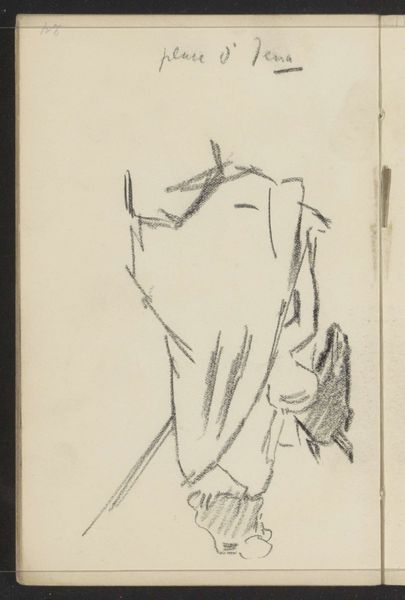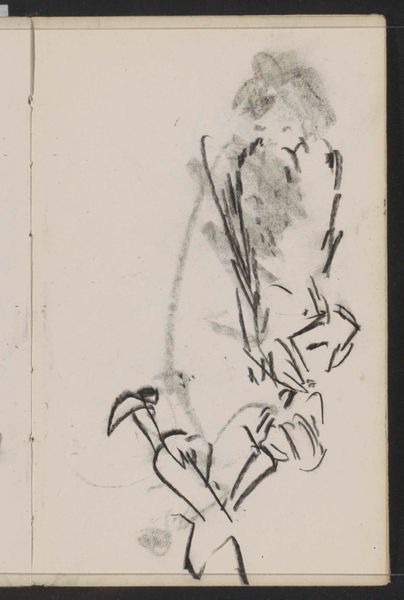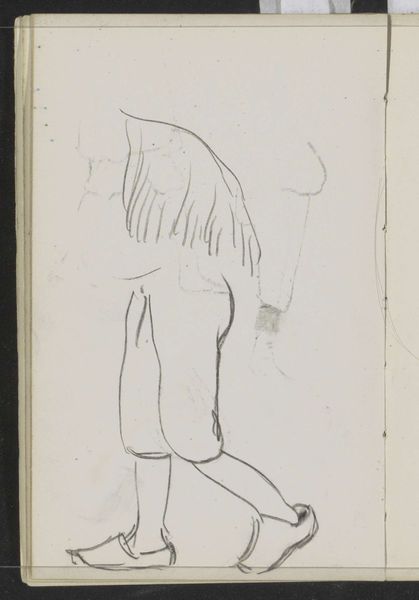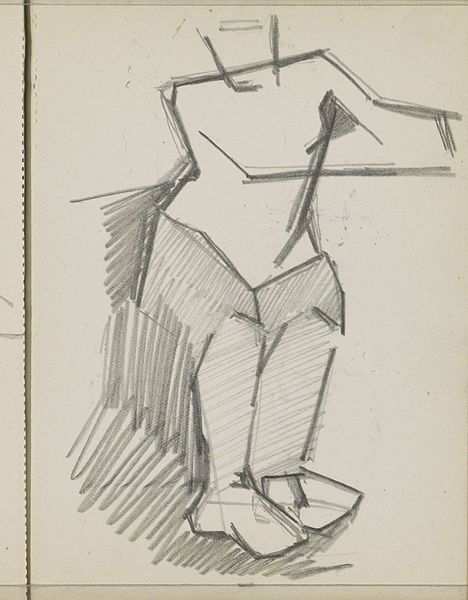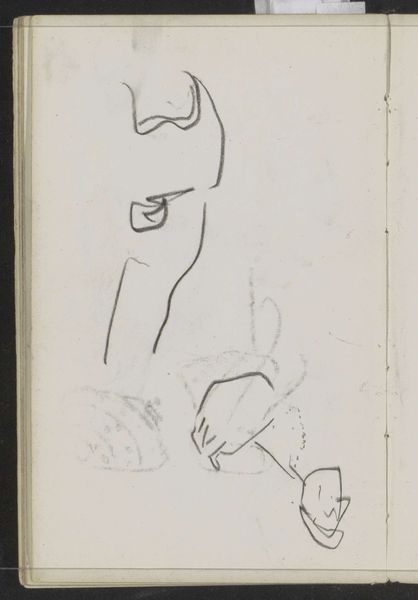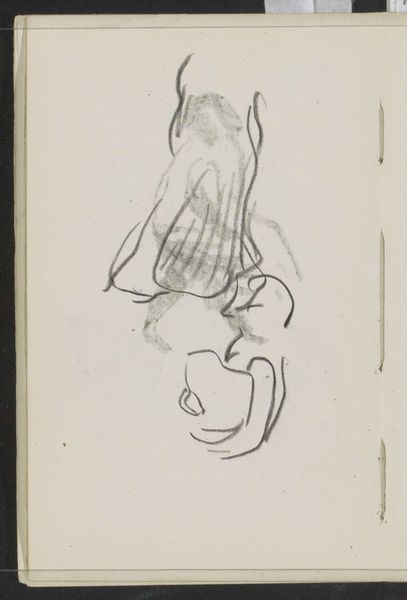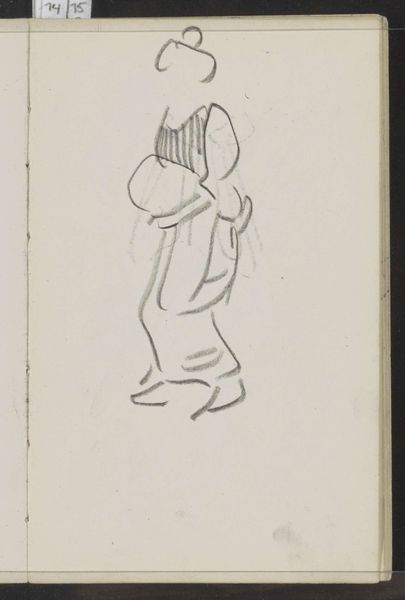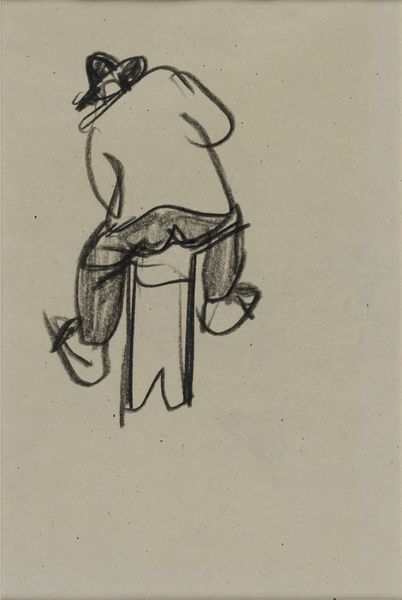
Copyright: Rijks Museum: Open Domain
Curator: We’re now looking at "Lopende benen van een man en vrouw," or "Walking Legs of a Man and Woman," by Carel Adolph Lion Cachet, dating sometime between 1874 and 1945. It's a pencil drawing on paper, currently held at the Rijksmuseum. Editor: What strikes me first is the hurried nature of the sketch. It feels almost like a fleeting glimpse, a moment captured on the fly. Curator: Precisely. The artist's employment of line is critical here; it’s reduced to its most essential function. We observe a certain dynamism achieved through the economy of strokes, suggesting movement without fully describing form. Editor: You know, there’s something so vulnerable about focusing only on the legs. It’s like we’re only allowed to see their journey, but not the people taking it. Where are they going, I wonder? And why so briskly? It feels strangely… human, immediate. Curator: The composition draws attention to the mechanics of walking, of locomotion itself. Notice the attention paid to the articulation of the knees and ankles, the angle of the feet. The artist abstracts the figure, reduces it to its fundamental elements and implies a semiotic investigation into form and function. Editor: It makes you think about how much of our identity is tied to our physical presence. Just legs, walking…it's a kind of universal signifier of purpose. Even without faces or stories, the legs carry meaning. It’s almost poetic. Curator: A fair assessment, yes. Although, such accessible poetics belie the structural rigour and stylistic experimentation with Impressionistic techniques that the artist has mastered. This aesthetic is also historically relevant as we examine semiotic figuration of human forms as they evolve. Editor: So, while you see a study of line and form, I’m picturing a harried couple late for their train, a child chasing a ball, or someone rushing home on a cold winter evening. Art reduces and evokes something more, you see? It takes its cue from its forms. Curator: Yes, both views enrich our comprehension. One is formal, the other... visceral. Editor: Well said, what's art without a bit of visceral thrill. It's more than a sketch—it's a tiny glimpse into human moment.
Comments
No comments
Be the first to comment and join the conversation on the ultimate creative platform.



